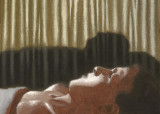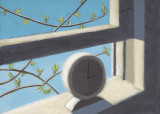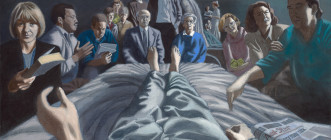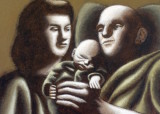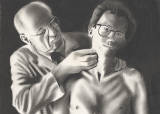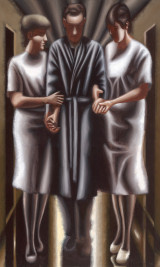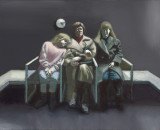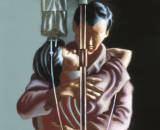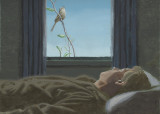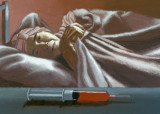Illness & Healing
“Illness and Healing” was both a book and exhibition (Dalhousie University Art Gallery, 1991). The series draws upon Robert’s 10 year-long struggle with cancer, detailing stages of diagnosis and treatment. The hospital is portrayed as a microcosm of society, a world within a world, affecting all ages, races and social classes. Robert’s research led him to x-ray rooms and labs, scanning machines and microscopes. He visited children’s hospitals, chapels and day clinics. He accompanied doctors on their rounds. He talked to therapists, ministers and nurses and showed his pictures to his own cancer doctor, Dr. Ross Langley, with whom he brainstormed ideas.
In January 1989, Robert received a letter from his friend Douglas How, a Toronto-based journalist and cancer patient. Douglas How was a professional observer of people and he kindly fed ideas and shared experiences with Robert. But he was only one of a much larger network of friends and fellow patients with whom Robert received feedback. Whether he intended it or not, Robert became a channeller and spokesman for the experiences of others. His cancer project was deeply personal, but it had this other purpose, using artwork to create a community sharing stories with one another.
Illness & Healing combines both a documentary, procedural approach, as well as a more fantastic or psychological approach that examines the inner life of patients. Robert organized his series by themes, starting with technology and ending with religion. Chemotherapy and Christ brings together the technology of wonder drugs and and a religious icon in the same image. In between these are topics one might expect, such as “doctor and patient,” “hospital,” and “treatments.” “Visitors” and “family” are treated separately. The image Hug shows a couple embracing despite the awkward medical apparatus between them. The painting, along with other images such as Mother and Son, Family Waiting, and The Gift, depicts love and loyalty through difficult circumstances and suggests the figures are in a hospital playing out an important private moment on a public stage. More unusual topics in Robert’s series include “night time” and “windows.” These allow Robert to explore the interior thoughts and dreams of patients. It is interesting to note the category “healing” is separate from categories on doctors and treatments. Healing is not a procedure or a body function as much as it is a physical and psychic reconnection to the world.
